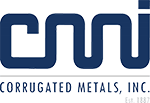Electric vehicle (EV) production has increased substantially in recent years, boosting the demand for batteries to power these vehicles. Battery manufacturing facilities are critical to meeting this demand and producing high-quality batteries. They are often equipped with specialized equipment and processes to create different types of batteries and related components used in EVs.
The complex infrastructure of battery manufacturing facilities is pivotal in the EV industry, from advanced assembly lines to rigorous quality control procedures. This article will discuss the overview of these facilities, including the types of batteries used in EVs and the components comprising the facilities themselves.
How Do Battery Manufacturing Facilities Work?
The manufacturing facilities are complex and follow a specific production line to produce different batteries that can power EVs. The production process begins with assembling the battery cell, which involves stacking the anode, cathode, and separator layers. These cells are then connected in series or parallel to create a battery pack — the final product.
The facilities require strict quality control measures to ensure the production of high-performance parts and components. After the battery cells are assembled and connected, they are subjected to testing procedures to meet the required performance standards. This includes testing for capacity, cycle life, and safety features. Once the batteries pass these tests, they are packaged and shipped to EV manufacturers and integrated into the vehicles.
Types of Batteries Utilized in EVs
EVs require high-power and energy-density batteries while remaining cost-effective and safe. As a result, multiple battery types have emerged as viable options for usage in these vehicles. Here are a few examples:
- Lithium-ion batteries:These are the most commonly used batteries in EVs due to their high energy density, long lifespan, and excellent performance characteristics.
- Nickel-metal hydride batteries:These are older technology still used in some EVs due to their lower cost and safety features.
- Solid-state batteries:These batteries are a newer technology with the potential to replace lithium-ion batteries due to their higher energy density and improved safety features.
- Sodium-ion batteries:These are similar to lithium-ion but use sodium instead. They are cheaper to produce but still under development and are not widely used in EVs.
Standard Components of Battery Manufacturing Facilities
Battery manufacturing facilities consist of components working together to increase production efficiency and ensure the creation of reliable batteries. Below are some of the fundamental elements typically present in these facilities:
Assembly Lines
Assembly lines are structured to assemble battery cells into a battery pack, where each station carries out a specific function. The process starts with preparing the battery cells, followed by cell stacking, tab welding, and electrical testing. These tasks often utilize machinery and tools for seamless operation and execution. As the battery pack advances through the assembly line, it nears completion.
Testing and Quality Control Processes
During the battery cell manufacturing process, various tests are performed at each stage to ensure the cells meet the required specifications. These tests include measuring the cell’s capacity, resistance, and voltage. Cells that do not meet the specifications are removed from the production line and reworked or discarded.
Raw Materials Storage Areas
The storage areas provide a safe and controlled environment for the raw materials, including lithium, cobalt, nickel, and manganese. These materials are typically placed in containers — such as drums or bags — and are labeled and organized for easy identification and access. Moreover, the areas protect the materials from contamination and degradation.
Environmental Control Systems
Environmental control systems are an essential component to help maintain a controlled and stable production environment. These systems include heating, ventilation, air conditioning, temperature, and humidity control. Larger facilities also equip lighting and sound control mechanisms to further optimize the work area.
Corrugated Metals: Your Trusted Partner for High-Quality Formed Metal Products
At CMI, we believe in building lasting relationships with our customers in our markets! We are committed to continuously improving our product offerings to meet the evolving customer needs. We also regularly invest in new equipment and technology to enhance our manufacturing capabilities. This allows us to remain competitive in the market and support the development of new products.
Contact us now to learn more about our services, or request a quote today!

